What is the Express Entry System in Canada? Every two weeks, Immigration, Refugees, and Citizenship Canada (IRCC) holds Express Entry draws, during which top-ranking candidates get invitations to apply for permanent residence. How the process works and how they evaluate the candidates—we know that you have many questions.
Let’s check out all these details and focus on the tips to help you complete the process and create a successful application.
First, we need to understand the Express Entry system and how it works. As you may know, it’s an online management system that allows potential immigrants to apply for permanent residence. They rank the candidates through a Comprehensive Ranking System (CRS) score, about which we will talk in a while. As a digital platform, the Express Entry system manages immigration applications through three federal programs:
Each program has its own eligibility criteria, which means that you should research the ones that fit your profile. Not sure which one is yours? You can work with immigration experts to take that burden off your shoulders.
Before applying, ensure you meet the basic eligibility criteria for Express Entry. General requirements include:
Having a good grasp of these requirements helps avoid ineligibility issues and saves time.
Tip: Use the Express Entry Comprehensive Ranking System calculator to get a preliminary score and understand how competitive your profile is.
After understanding which program you choose, it’s time to understand the Express Entry system process:
Provide personal information, education, work experience, language test results, and other relevant details. Submit your profile to the Express Entry pool.
Here’s what to focus on:
Pro Tip: Is a cash job accepted in the Express Entry system? Only mention formal jobs with proper documentation. Cash jobs or informal work typically cannot be verified and may not qualify under the Express Entry work experience points.
Managing your profile online through your Canada Express Entry login on the IRCC portal is essential as well. Here are a few tips to make profile management easier:
Those who have the best CRS get an Invitation to Apply (ITA). But what is the Comprehensive Ranking System for Express Entry draws? It’s a points-based system that the government uses to rank each immigrant in the Express Entry pool.
How is the CRS calculated? It’s calculated based on the information in the profile, including age, education, employment history, and language ability. Here’s how to make CRS better:
You have a limited time (60 days) after receiving an ITA to submit a complete application with the necessary Express Entry Documents. Advice on how to manage your ITA:
Those that are accepted must pass a security clearance and medical examination.
You will be granted a permanent residence visa upon final approval. To have peace of mind, use immigration services if you don’t want to do all of these tasks by yourself.
The following papers are necessary when creating an Express Entry profile:
Following receipt of an ITA, additional paperwork will be needed, including:
Maintaining current documentation guarantees a timely and error-free application procedure.
Canada invites top-ranked applicants to express entry drawings regularly. You can gauge the level of competition right now by monitoring the CRS cut-off scores in these draws. In general:
Setting reasonable expectations for when you could obtain an ITA might be facilitated by being aware of cut-off tendencies. To stay competitive, monitor your profile score and make adjustments as needed.
If you need assistance boosting your CRS score or have doubts regarding specific eligibility, consider opting for our Express Entry visa consulting to guide you through each step. Particularly this service is helpful if you’re close to the cut-off score; our immigration consultants can offer advice on eligibility, document preparation, and CRS optimization.
How to get a visa for self-employment? Self-employed people have particular difficulties using the Express Entry system. To demonstrate self-employment, applicants must submit thorough documentation, such as bank accounts, business registrations, promotion letters, employment contracts, pay stubs, and other independently verified proof of work experience. Those with experience working for themselves should make sure their records satisfy the IRCC’s criteria since documentation is crucial. Our immigration consultants know that this may be a complex case, so don’t hesitate to reach out to us about getting a visa for self-employment.
Although navigating the Express Entry system might be challenging, you can succeed if you are well-prepared and aware of the criteria. Every step is essential to increasing your chances of a successful application process, from maximizing your CRS score to making sure you have the right paperwork.

contact@canadianimmigrationpartners.com
tel: 1-647-557-2288
100 King Street West – Suite 5700
Toronto, Ontario M5X 1C7
Canada